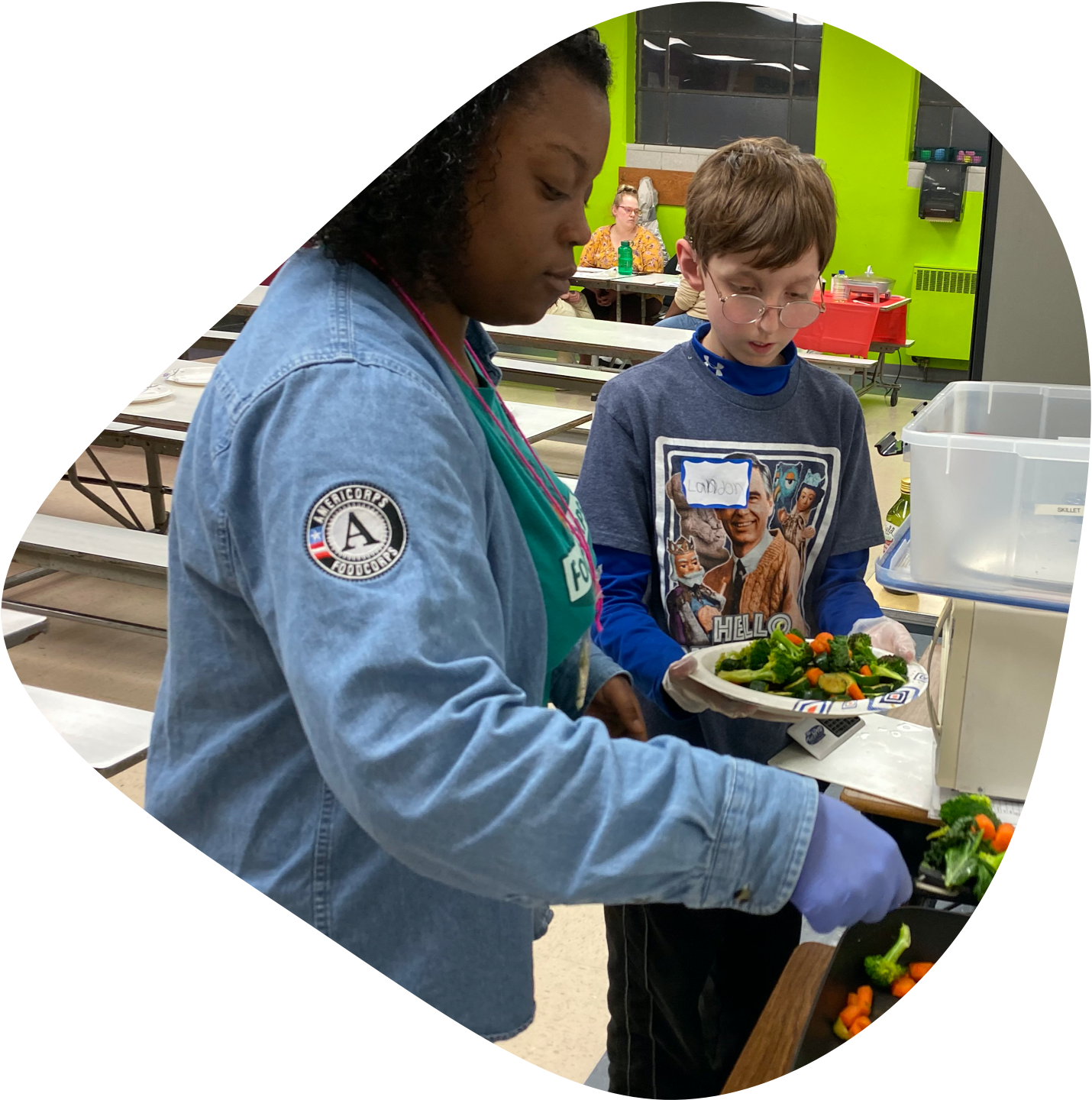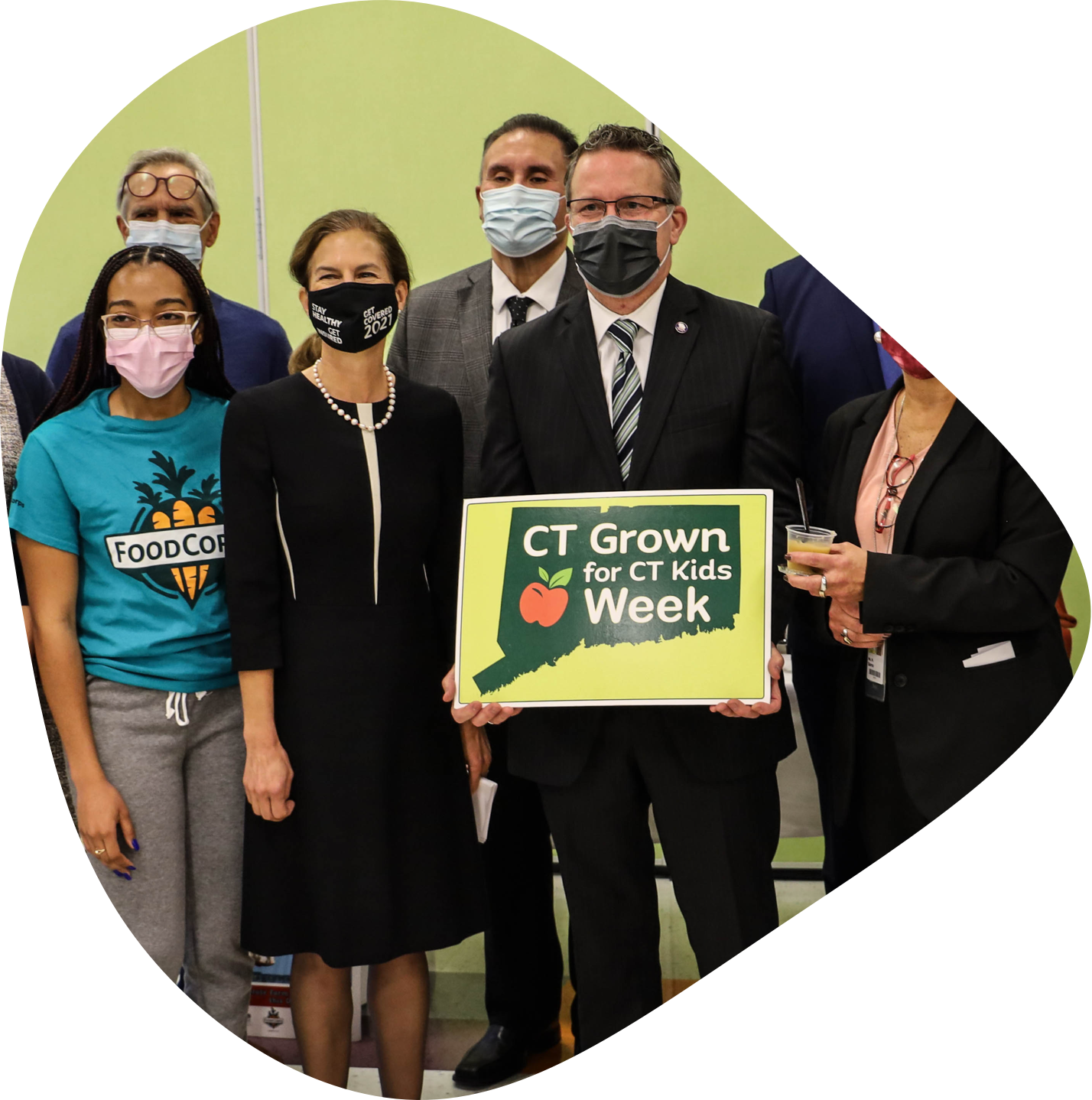
How to Advocate to Your School Board for Nourishing Food
Help nourish students’ minds, bodies, and hearts this holiday season!
FoodCorps programming directly improves the lives of students across the country and works to affect systems change at every level, from local schools to federal policy.
FoodCorps’ work is making a difference in kids’ relationship with food. Learn more about our corps, who we reach, and the impact we make every day.
2023-2024 school year
schools served
students reached through direct service

Strong relationships are a cornerstone of FoodCorps service. Five years of FoodCorps support in Iowa helped service member Dainese Pridgeon step into her role in 2018. So when schools closed in March 2020, she had the trust that was needed to immediately begin helping cafeteria staff cook and bag meals for Cedar Rapids families five days a week. Dainese credits those who came before her: “It makes me so grateful to the first FoodCorps members, who let me do what I was doing.”
2023-2024 school year
162 FoodCorps AmeriCorps members
of corps members are serving in their local communities



of service member alumni continue to make an impact through careers in policy, education, and public health
Of the 220 schools we serve in 2023-2024:
lessons taught
food tastings led by corps members
received taste tests of new foods
received support for a school garden

When FoodCorps arrived in Connecticut in 2012, conversations with other organizations sparked an interest in getting farm to school — or healthy, local foods served directly to students — off the ground. A few years later, through partnerships with state agencies, anti-hunger groups, and food systems organizations, the Connecticut Farm to School Collaborative was born. Members met with legislative champions and shared stories about the impact of farm to school, eventually testifying before the Education Committee. In 2021, their work paid off. The CT Grown for CT Kids program launched with $500,000 of federal funding, helping to ensure Connecticut kids eat more fresh, local foods.